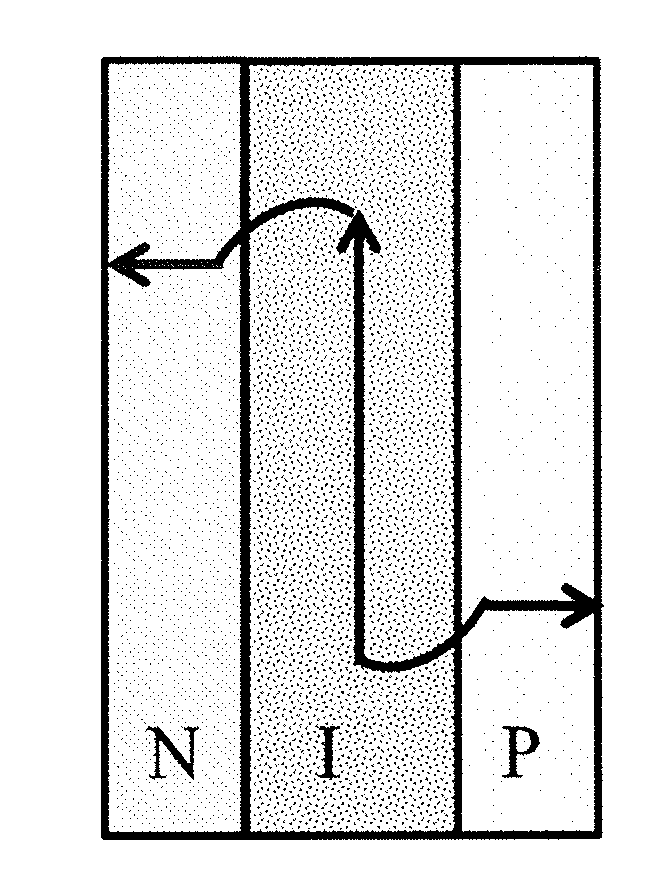Mesoscopic framework for organic-inorganic perovskite based photoelectric conversion device and method for manufacturing the same
- Summary
- Abstract
- Description
- Claims
- Application Information
AI Technical Summary
Benefits of technology
Problems solved by technology
Method used
Image
Examples
example 1
[0100]Preparation of a Mesoporous Inorganic P-I-N Metal Oxides Framework
[0101]The substrate of the device was a glass substrate covered with fluorine-doped tin oxide (FTO), wherein the thickness of the glass substrate was 4 mm and the electric resistance of the glass substrate is 10 Ω. A blocking layer of TiO2 was deposited on the FTO glass by spray pyrolysis deposition with di-isopropoxytitanium bis(acetyl acetonate) (TiDIP, 75% in isopropanol, Aldrich) solution at 450° C. A mesoporous inorganic N-type semiconductor layer was coated by screen printing method using a paste containing TiO2 particles with diameter of 20 nm (DSL. 18NR-T, 20 nm, Dyesol, Austrilia) for one time or several times. The thickness of the TiO2 layer was 400 nm, and then dried in 125° C. for 10 min. Then, a mesoporous inorganic insulating layer was coated by the same screen printing method using a paste containing Al2O3 particles with diameter of 20 nm (Aladdin, 20 nm, China). The thickness of the TiO2 layer wa...
example 2
[0102]Preparation of a Mesoporous Inorganic P-I-N Metal Oxides Framework
[0103]The process for preparing the mesoporous inorganic P-I-N metal oxides framework of the present embodiment was the same as that described in Example 1, except that the TiO2 particles was substituted with the ZnO particles with diameter of 10 nm and the thickness of ZnO layer was 200 nm. Then, the coated glass substrate was sintered at 500° C. for 30 min, and the thickness of the mesoporous inorganic P-I-N metal oxides framework was 1.2 μm.
example 3
[0104]Preparation of a Mesoporous Inorganic P-I-N Metal Oxides Framework
[0105]The process for preparing the mesoporous inorganic P-I-N metal oxides framework of the present embodiment was the same as that described in Example 1, except that the Al2O3 particles was substituted with the ZrO2 particles with diameter of 50 nm and the thickness of ZrO2 layer was 600 nm. Then, the coated glass substrate was sintered at 500° C. for 30 min, and the thickness of the mesoporous inorganic P-I-N metal oxides framework was 1.6 μm.
PUM
 Login to View More
Login to View More Abstract
Description
Claims
Application Information
 Login to View More
Login to View More - R&D
- Intellectual Property
- Life Sciences
- Materials
- Tech Scout
- Unparalleled Data Quality
- Higher Quality Content
- 60% Fewer Hallucinations
Browse by: Latest US Patents, China's latest patents, Technical Efficacy Thesaurus, Application Domain, Technology Topic, Popular Technical Reports.
© 2025 PatSnap. All rights reserved.Legal|Privacy policy|Modern Slavery Act Transparency Statement|Sitemap|About US| Contact US: help@patsnap.com



